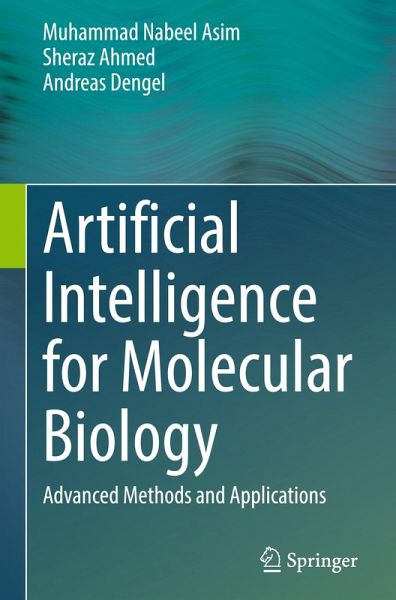
Artificial Intelligence for Molecular Biology
Advanced Methods and Applications

PAYBACK Punkte
28 °P sammeln!
The integration of artificial intelligence (AI) into molecular biology has brought about a paradigm shift, enabling researchers to tackle some of the most challenging problems in life sciences. This second volume builds upon the foundational principles explored in Volume I, delving into advanced AI methodologies and their applications in understanding biological sequences at a granular level. From word embeddings to language models, this volume examines the state-of-the-art techniques driving progress in molecular biology.The chapters in this volume are structured to provide an in-depth explor...
The integration of artificial intelligence (AI) into molecular biology has brought about a paradigm shift, enabling researchers to tackle some of the most challenging problems in life sciences. This second volume builds upon the foundational principles explored in Volume I, delving into advanced AI methodologies and their applications in understanding biological sequences at a granular level. From word embeddings to language models, this volume examines the state-of-the-art techniques driving progress in molecular biology.
The chapters in this volume are structured to provide an in-depth exploration of AI methods and their transformative impact on DNA, RNA, protein, and peptide analysis:
Word Embedding Methods: This chapter explores the evolution of word embedding techniques, including foundational models like Word2Vec, FastText, and GloVe, as well as advanced graph-based embeddings such as DeepWalk, Node2Vec, and Struc2Vec. These embeddings have revolutionized sequence representation, providing powerful tools for analyzing biological data.Large Language Models: Language models have reshaped the landscape of computational biology. This chapter examines models like ULMFiT, BERT, and cutting-edge tools like AlphaFold and RNAFormer, which have set new benchmarks in structure prediction and sequence analysis.AI-Driven Insights into DNA Sequence Analysis Landscape: AI has unlocked new possibilities in DNA analysis. This chapter reviews methodologies, datasets, and predictive pipelines, offering insights into the performance and distribution of research across various benchmarks.
The chapters in this volume are structured to provide an in-depth exploration of AI methods and their transformative impact on DNA, RNA, protein, and peptide analysis:
Word Embedding Methods: This chapter explores the evolution of word embedding techniques, including foundational models like Word2Vec, FastText, and GloVe, as well as advanced graph-based embeddings such as DeepWalk, Node2Vec, and Struc2Vec. These embeddings have revolutionized sequence representation, providing powerful tools for analyzing biological data.Large Language Models: Language models have reshaped the landscape of computational biology. This chapter examines models like ULMFiT, BERT, and cutting-edge tools like AlphaFold and RNAFormer, which have set new benchmarks in structure prediction and sequence analysis.AI-Driven Insights into DNA Sequence Analysis Landscape: AI has unlocked new possibilities in DNA analysis. This chapter reviews methodologies, datasets, and predictive pipelines, offering insights into the performance and distribution of research across various benchmarks.


